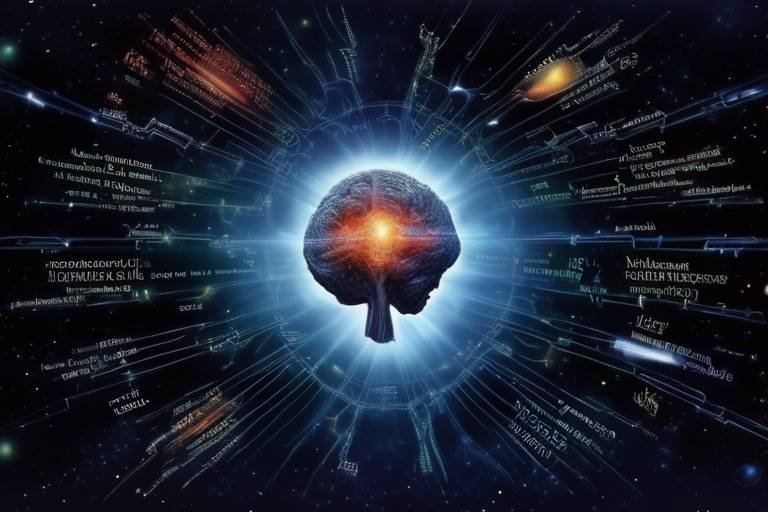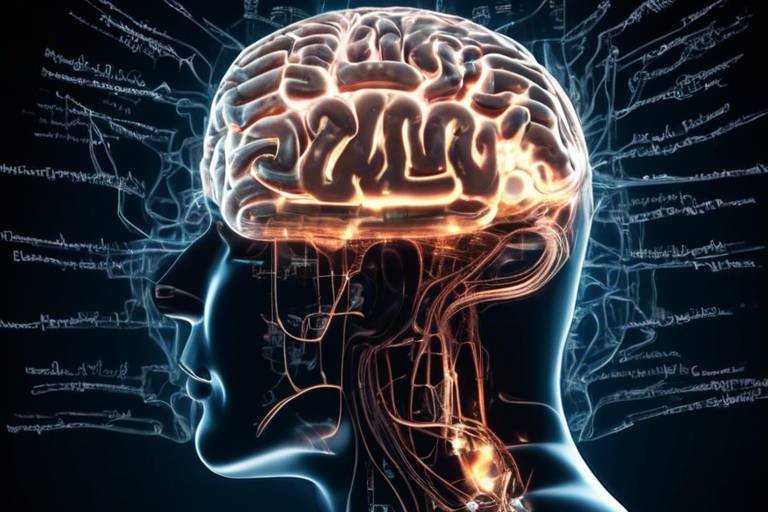Consciousness in Non-Human Animals - Fact or Fiction?
Have you ever looked into the eyes of a dog, cat, or even a dolphin and wondered what they might be thinking or feeling? This question lies at the heart of a fascinating and often contentious debate: Do non-human animals possess consciousness? The concept of consciousness is typically reserved for humans, but emerging research suggests that many animals may have rich inner lives, complete with emotions, thoughts, and awareness. Understanding consciousness in animals isn't just an academic exercise; it profoundly impacts how we view our relationship with other species and raises critical ethical considerations about their treatment.
Throughout history, the idea that animals might have their own thoughts and feelings has been dismissed by many as mere anthropomorphism—the attribution of human traits to non-human entities. However, recent scientific advancements in neuroscience and behavioral studies are challenging this traditional view. Researchers are exploring the neurological underpinnings of consciousness, and their findings raise intriguing questions about the cognitive capacities of various species. For instance, studies have shown that some animals can solve complex problems, use tools, and even communicate in sophisticated ways. These behaviors suggest a level of awareness that goes beyond instinctual responses.
As we delve deeper into the science of animal consciousness, we must also consider the philosophical implications. What does it mean to be sentient? How do we define consciousness? These are not just academic inquiries; they have real-world consequences for animal welfare and ethics. If we accept that certain animals have consciousness, we must also confront the moral responsibilities we hold towards them. This raises pressing questions about animal rights, welfare policies, and the ethical treatment of animals in various industries.
In the following sections, we will explore the scientific evidence supporting animal consciousness, the philosophical debates surrounding it, and the implications for animal welfare. Prepare to embark on a journey that challenges our understanding of consciousness and our place in the animal kingdom!
Investigating the neurological and behavioral evidence supporting the existence of consciousness in various animal species, this section highlights key research findings that challenge traditional views of animal cognition.
Delving into philosophical debates surrounding animal consciousness, this section discusses different theories and arguments that shape our understanding of sentience and the moral status of non-human animals.
Exploring the criteria for sentience, this subsection presents compelling evidence that many animals possess subjective experiences, leading to ethical considerations regarding their treatment and rights.
This section compares cognitive abilities across species, revealing how certain animals exhibit complex problem-solving skills and emotional responses, further supporting the idea of consciousness in the animal kingdom.
Examining instances of empathy and social interactions among animals, this subsection illustrates how emotional intelligence may indicate a level of consciousness previously underestimated in non-human species.
Addressing skepticism regarding animal consciousness, this section presents opposing viewpoints and critiques of the evidence, fostering a balanced discussion on the topic.
Considering the implications of recognizing consciousness in animals, this section discusses how it influences animal welfare policies, conservation efforts, and ethical treatment practices in various contexts.
This subsection explores how acknowledging animal consciousness can lead to changes in legislation aimed at protecting animal rights and ensuring humane treatment across different industries.
Highlighting the need for continued research, this section outlines potential areas of study that could further illuminate the complexities of consciousness in non-human animals and its broader implications.
- What is consciousness in animals? Consciousness in animals refers to their ability to have subjective experiences, thoughts, and feelings, similar to humans.
- How do scientists study animal consciousness? Researchers use behavioral experiments, neurological studies, and comparative cognition assessments to explore consciousness in different species.
- Do all animals possess consciousness? While many animals show signs of consciousness, the degree and nature of consciousness can vary widely across species.
- What are the ethical implications of animal consciousness? Recognizing animal consciousness raises questions about animal rights, welfare, and our moral obligations toward them.

The Science of Animal Consciousness
The concept of consciousness in non-human animals has been a hot topic in scientific circles, sparking curiosity and debate among researchers and animal lovers alike. Traditionally, many people believed that consciousness was a uniquely human trait, but recent studies have challenged this notion. This section dives into the fascinating world of animal cognition, examining the neurological and behavioral evidence that suggests many animals possess a form of consciousness.
One of the most compelling pieces of evidence comes from neurological studies that show similarities between human and animal brains. For instance, researchers have found that certain species, such as primates, dolphins, and elephants, exhibit complex brain structures that are associated with higher cognitive functions. These structures include the neocortex, which is involved in sensory perception and cognition. The presence of these structures raises the question: if these animals have similar brain architectures, could they also experience consciousness in a way that’s comparable to humans?
Behavioral studies further support the idea of animal consciousness. For example, experiments involving problem-solving tasks have demonstrated that various species can engage in complex behaviors that suggest a level of awareness. Take the New Caledonian crow, known for its impressive tool-making skills. These birds have been observed crafting tools from twigs to extract insects from tree bark. This ability indicates not only intelligence but also a level of foresight and planning, which are often associated with conscious thought.
Moreover, studies on emotional responses in animals have revealed surprising insights. Animals such as dogs and elephants display behaviors that suggest they experience emotions similar to humans. For instance, elephants are known to mourn their dead, exhibiting behaviors that resemble grief. This raises an important point: if animals can feel emotions, does that not imply a level of consciousness that warrants our attention and respect?
To better understand the nuances of animal consciousness, researchers have developed various criteria for assessing sentience. These criteria include the ability to experience pain and pleasure, the capacity for emotional responses, and the presence of self-awareness. A study conducted by scientists at the University of Cambridge found that certain species, including octopuses and some fish, exhibit behaviors indicative of pain perception. This finding suggests that consciousness may not be limited to mammals but could extend to a broader range of species.
In summary, the scientific exploration of animal consciousness is a rapidly evolving field that challenges long-held beliefs about the cognitive abilities of non-human species. As we continue to uncover evidence of consciousness in animals, it becomes increasingly clear that many creatures experience the world in ways that are complex and rich. This understanding not only reshapes our perception of animals but also calls for a reevaluation of how we treat them.
- What is animal consciousness?
Animal consciousness refers to the awareness and subjective experiences that non-human animals may possess, encompassing their ability to feel emotions, perceive their environment, and engage in complex behaviors.
- How do scientists study animal consciousness?
Researchers study animal consciousness through various methods, including neurological examinations, behavioral experiments, and observations of emotional responses in different species.
- Are all animals conscious?
While not all animals may possess consciousness in the same way humans do, evidence suggests that many species, particularly mammals, birds, and even some invertebrates, exhibit signs of sentience and awareness.
- What are the implications of recognizing animal consciousness?
Recognizing animal consciousness has significant implications for animal welfare, ethics, and legislation, prompting a reevaluation of how we treat and protect non-human animals.

Philosophical Perspectives
The concept of consciousness in non-human animals is not just a scientific inquiry; it also raises a plethora of philosophical questions that challenge our understanding of sentience and moral obligation. When we ponder whether animals experience consciousness, we are, in essence, grappling with the very definition of what it means to be conscious. Are we merely biological machines, or do we possess an inner life filled with thoughts, feelings, and experiences? This debate extends beyond human beings and invites us to consider the subjective experiences of other species.
One of the cornerstone arguments in favor of recognizing animal consciousness comes from the theory of sentience. Sentience refers to the capacity to have feelings, sensations, and experiences. Philosophers like Peter Singer argue that the ability to suffer or experience pleasure should be the basis for moral consideration. If we accept that many animals can feel pain, joy, and even grief, then it becomes increasingly difficult to justify their mistreatment. This perspective challenges traditional views that often place human experiences on a pedestal, relegating non-human animals to mere objects devoid of emotional depth.
To further illustrate this point, consider the following criteria often used to assess sentience in animals:
- Neurological Complexity: Many animals possess complex nervous systems that suggest the capability for conscious experience.
- Behavioral Evidence: Observations of behaviors such as problem-solving and emotional responses indicate a level of cognitive function that aligns with consciousness.
- Social Interactions: Animals often engage in social behaviors that imply awareness of others' feelings and states, hinting at empathy and consciousness.
In addition to the argument for sentience, philosophers also engage in the discussion of comparative cognition. This line of inquiry compares cognitive abilities across species, highlighting how certain animals, such as dolphins and elephants, exhibit remarkable problem-solving skills and emotional intelligence. These findings challenge the anthropocentric view that only humans possess advanced cognitive faculties. The implications are profound: if animals can think and feel, then our ethical considerations must expand accordingly.
Moreover, the exploration of empathy and social behavior among animals has sparked significant philosophical debate. Instances of altruism and emotional bonding in species like primates and canines suggest that these animals not only experience their own emotions but can also recognize and respond to the emotional states of others. This emotional intelligence could be seen as a sign of consciousness that we have previously underestimated. For instance, when a dog comforts its owner during a tough time, it raises the question: Is this merely instinct, or does it signify a deeper understanding of suffering?
However, the discourse surrounding animal consciousness is not without its skeptics. Critics argue that attributing consciousness to animals may lead to anthropomorphism, where human traits are projected onto non-human entities. They caution against interpreting animal behavior through a human lens, suggesting that such interpretations could misrepresent the true nature of animal experiences. This skepticism fosters a balanced discussion, reminding us that while we strive to understand animal consciousness, we must also remain cautious in our attributions.
Ultimately, the philosophical perspectives on animal consciousness encourage us to reflect on our ethical responsibilities toward non-human beings. As we navigate this complex terrain, we must consider how our beliefs about consciousness influence our treatment of animals. Recognizing that many animals may possess consciousness not only enriches our understanding of the animal kingdom but also compels us to advocate for their rights and welfare.
- What is animal consciousness? Animal consciousness refers to the awareness and subjective experiences of non-human animals, encompassing their ability to feel emotions and sensations.
- How do scientists study animal consciousness? Researchers examine neurological and behavioral evidence, comparing cognitive abilities across species to assess the presence of consciousness.
- What are the ethical implications of recognizing animal consciousness? Acknowledging animal consciousness may lead to improved animal welfare policies, conservation efforts, and changes in legislation aimed at protecting animal rights.

The Argument for Sentience
When we talk about sentience, we’re diving into a complex realm that goes beyond mere survival instincts. Sentience refers to the capacity to have subjective experiences, feelings, and perceptions. It's a concept that challenges our traditional views of animals as mere automatons, driven solely by instinct. So, what makes us think that many animals might actually possess this profound quality? Well, let’s unpack this intriguing argument.
First off, research in neurology has provided compelling evidence that many animals have brain structures similar to humans, which are associated with emotions and consciousness. For instance, studies on primates and cetaceans (like dolphins and whales) show that their brain-to-body mass ratios and the presence of complex neural networks are remarkably similar to ours. This suggests that they might experience emotions such as joy, grief, and even empathy.
Moreover, behavioral studies have shown that animals can demonstrate behaviors that imply they have subjective experiences. For example, elephants have been observed mourning their dead, exhibiting behaviors that suggest they understand loss and grief. Similarly, dogs display signs of joy when reunited with their owners, indicating a level of emotional awareness that goes beyond basic instinct.
To further illustrate the argument for sentience, consider the following criteria that are often used to assess an animal's capacity for subjective experience:
- Emotional Responses: The ability to express emotions such as fear, joy, or sadness.
- Problem-Solving Skills: The capacity to navigate complex situations that require thought and planning.
- Social Interactions: Engaging in complex social behaviors that suggest an understanding of relationships and community.
- Self-Awareness: Evidence of recognizing oneself in mirrors or other reflective surfaces, indicating a level of consciousness.
These criteria not only challenge the notion that animals are devoid of consciousness but also raise important ethical questions about how we treat them. If many animals possess a form of sentience, then it becomes our moral obligation to consider their welfare in a more profound way. This understanding could shift the paradigm in which we view animal rights, leading to enhanced protections and ethical treatment across various industries.
In conclusion, the argument for sentience is not just a scientific or philosophical debate; it’s a call to action. Recognizing that many non-human animals are capable of experiencing the world in a way that is similar to us can fundamentally change our approach to animal welfare and ethics. It’s about time we open our eyes to the emotional lives of our fellow beings and act accordingly.
- What is animal sentience? Animal sentience refers to the capacity of animals to have subjective experiences and feelings.
- How do scientists measure sentience in animals? Researchers look at neurological structures, behavioral responses, and emotional expressions to assess sentience.
- Why is recognizing animal sentience important? Acknowledging animal sentience can lead to better treatment and welfare policies for animals.

Comparative Cognition
When we think about intelligence, our minds often jump to humans, but the animal kingdom is teeming with examples of remarkable cognitive abilities. Comparative cognition studies how different species solve problems, communicate, and interact with their environments, revealing a fascinating tapestry of intelligence that challenges our traditional views. For instance, did you know that some birds, like crows and parrots, can use tools? This behavior is not just a fluke; it shows a level of planning and understanding that many would argue is indicative of consciousness.
In fact, research has shown that certain species exhibit cognitive skills that rival those of primates. A classic example is the New Caledonian crow, known for its ability to create tools from twigs and leaves to extract insects from tree bark. This kind of behavior suggests not only problem-solving skills but also an understanding of cause and effect—an essential component of consciousness. Similarly, studies on dolphins have revealed their ability to recognize themselves in mirrors, a trait often associated with self-awareness, which is another cornerstone of cognitive complexity.
Consider the octopus, an invertebrate that has astounded scientists with its ability to navigate mazes and solve puzzles. These creatures possess a unique nervous system, with neurons distributed throughout their arms, enabling them to perform complex tasks independently. This raises the question: if an octopus can demonstrate such intelligence, what does it say about the consciousness of other species that we may underestimate?
To further illustrate the diversity of cognitive abilities across the animal kingdom, let’s look at a comparison table that highlights some key species and their notable cognitive skills:
| Animal | Notable Cognitive Skills |
|---|---|
| Crow | Tool use, problem-solving, and planning |
| Dolphin | Self-recognition, complex communication, and social learning |
| Octopus | Problem-solving, mimicry, and escape artistry |
| Elephant | Memory, empathy, and social intelligence |
This table serves as a reminder that intelligence is not a trait exclusive to humans. As we delve deeper into the study of comparative cognition, we uncover a world where animals not only survive but thrive through their intellectual capabilities. The emotional and cognitive lives of these creatures are intertwined, suggesting that consciousness may manifest in various forms across species.
As we continue to explore these fascinating insights, it’s essential to ask ourselves: if animals exhibit such profound cognitive abilities, how should we adjust our treatment of them? Recognizing the complexity of animal minds could lead to a deeper understanding of their needs and rights, ultimately fostering a more compassionate relationship between humans and non-human animals.
- What is comparative cognition? Comparative cognition is the study of how different species think, solve problems, and interact with their environments.
- Which animals are known for their cognitive skills? Animals like crows, dolphins, octopuses, and elephants are known for their remarkable cognitive abilities.
- How does this research impact animal welfare? Understanding animal cognition can lead to improved treatment and rights for animals, influencing policies and conservation efforts.

Empathy and Social Behavior
When we think about empathy and social behavior, we often picture humans engaging in acts of kindness or understanding one another's feelings. However, what if I told you that many non-human animals also exhibit similar behaviors? It’s a fascinating realm that challenges our understanding of consciousness beyond just human experiences. Research has shown that animals, from elephants to dolphins, display behaviors that suggest they can empathize with one another, creating complex social structures that are rich in emotional intelligence.
For instance, elephants are known for their extraordinary social bonds. They often engage in comforting behaviors when a member of their herd is distressed. When a baby elephant falls or becomes separated from its mother, other elephants will rush to assist, using their trunks to caress and comfort the distressed animal. This behavior is not just instinctual; it indicates a level of emotional awareness that many previously believed was unique to humans.
Dolphins, too, exhibit remarkable social behaviors that hint at their capacity for empathy. These intelligent creatures have been observed helping injured or sick companions, even pushing them to the surface to breathe. Such actions suggest that dolphins can recognize the suffering of others and respond in a way that alleviates that suffering. It’s as if they possess an innate understanding of what their peers are feeling, which raises intriguing questions about the nature of their consciousness.
But empathy in the animal kingdom isn’t limited to these two species. Research has shown that social animals like dogs and primates also engage in empathetic behaviors. Dogs, for example, have an uncanny ability to sense their owner's emotions, often responding with comforting actions when their human is sad or stressed. Similarly, primates have been observed sharing food and grooming each other, behaviors that strengthen social bonds and indicate a level of emotional awareness.
To better illustrate this concept, consider the following table that summarizes some key examples of empathy in various animal species:
| Animal | Empathetic Behavior | Context |
|---|---|---|
| Elephants | Comforting distressed members | When a herd member is in distress |
| Dolphins | Assisting injured companions | Helping sick dolphins breathe |
| Dogs | Responding to human emotions | Providing comfort to sad owners |
| Primates | Sharing food and grooming | Strengthening social bonds |
The implications of these findings are profound. If animals can exhibit empathy, it suggests that they possess a level of consciousness that allows them to understand and respond to the emotions of others. This realization compels us to reconsider how we treat non-human animals and the moral responsibilities we have towards them. Are we not obligated to ensure their welfare and protect their rights, especially when they display such complex emotional behaviors?
In conclusion, the exploration of empathy and social behavior in non-human animals not only enriches our understanding of their cognitive abilities but also challenges us to rethink our ethical stance towards them. As we continue to uncover the layers of consciousness in the animal kingdom, we find ourselves at a crossroads of moral and ethical responsibility, urging us to foster a deeper connection with the non-human beings that share our planet.

Counterarguments and Skepticism
While the discussion surrounding animal consciousness is increasingly gaining traction, it is essential to acknowledge the counterarguments and skepticism that persist in this field. Critics argue that attributing consciousness to non-human animals may be a projection of human emotions and experiences onto creatures that do not possess the same cognitive frameworks. This skepticism often stems from a reliance on observable behavior rather than subjective experience, leading some to question whether we can truly understand what animals feel or think.
One of the primary arguments against animal consciousness is the lack of definitive evidence. Detractors often claim that while animals exhibit complex behaviors, such as problem-solving and social interactions, these can be explained through instinctual responses rather than conscious thought. For instance, a dog may seem to understand when its owner is upset and respond with comforting behavior, but skeptics argue that this is merely a learned behavior rather than a sign of empathy or consciousness.
Moreover, the concept of consciousness itself is still a topic of intense debate among scientists and philosophers. Some contend that consciousness is a uniquely human trait, deeply intertwined with language and abstract thought. They argue that without the ability to articulate experiences verbally, it is challenging to claim that non-human animals possess consciousness in a comparable manner. This raises the question: if we cannot communicate with animals as we do with each other, how can we truly know what they are experiencing?
Additionally, there are concerns regarding the interpretation of animal behavior. Behavioral scientists often emphasize that interpreting an animal's actions through a human lens can lead to significant misunderstandings. For example, a cat may purr when content, but it can also purr when in pain or distress. This duality complicates our understanding of animal emotions and consciousness. Thus, critics argue that we must be cautious about attributing human-like consciousness to non-human creatures based solely on their behaviors.
Despite these counterarguments, it is important to consider that skepticism does not negate the possibility of consciousness in animals; rather, it invites a more nuanced exploration of the topic. Engaging with skepticism can lead to more rigorous research and a deeper understanding of animal cognition. As we continue to explore the intricacies of consciousness, it is crucial to balance skepticism with an open mind, allowing for the potential that animals may experience the world in ways we have yet to fully comprehend.
- What is animal consciousness? - Animal consciousness refers to the awareness and subjective experiences that non-human animals may possess, similar to human consciousness.
- Why is there skepticism about animal consciousness? - Skepticism arises from the lack of definitive evidence and the challenges in interpreting animal behavior without human bias.
- How can we study animal consciousness? - Researchers use a combination of neurological studies, behavioral observations, and comparative cognition to explore consciousness in animals.
- What are the implications of recognizing animal consciousness? - Acknowledging animal consciousness can influence animal welfare policies, conservation efforts, and ethical treatment practices.

Implications for Animal Welfare
Recognizing that non-human animals may possess a form of consciousness has profound implications for animal welfare. This acknowledgment challenges us to rethink our relationship with animals and consider their emotional and cognitive needs. If animals are indeed conscious beings, it raises a critical question: how can we justify practices that cause them suffering? The shift in perspective from viewing animals as mere resources to seeing them as sentient beings demands a reevaluation of our ethical frameworks.
One significant implication of acknowledging animal consciousness is the potential for reform in animal welfare policies. Governments and organizations are increasingly called upon to implement regulations that protect animals from unnecessary suffering. For instance, industries such as factory farming, entertainment, and scientific research are under scrutiny for their treatment of animals. As society becomes more aware of the emotional lives of animals, there is a growing demand for humane practices that prioritize their well-being.
Moreover, this recognition influences conservation efforts. When we understand that animals experience the world in complex ways, it becomes vital to protect not only their habitats but also their social structures and psychological health. Conservation strategies that consider the emotional and social needs of animals are more likely to succeed. For example, programs designed to rehabilitate and release wild animals back into their natural environments must account for their social bonds and behavioral instincts.
Furthermore, acknowledging animal consciousness encourages a shift in public perception. As people become more aware of the cognitive and emotional capacities of animals, there is a growing movement toward adopting plant-based diets and supporting cruelty-free products. This shift not only benefits individual animals but also contributes to a more sustainable and ethical approach to food production.
In light of these considerations, it is essential to explore the legal and ethical ramifications of recognizing animal consciousness. Many countries are beginning to draft legislation that reflects this understanding, aiming to provide animals with rights similar to those afforded to humans. This includes laws that prevent cruelty, promote humane treatment, and establish sanctuaries for abused or neglected animals. As we progress, it’s crucial to engage in discussions about how laws can evolve to better protect non-human animals.
In conclusion, the implications of recognizing consciousness in non-human animals extend far beyond academic debates. They touch on our ethical responsibilities, influence policy-making, and shape our societal values. As we continue to unravel the complexities of animal consciousness, it is imperative that we advocate for practices that respect and protect these sentient beings, ensuring a more compassionate world for all.
- What is animal consciousness?
Animal consciousness refers to the awareness and subjective experiences that non-human animals may possess, including emotions, perceptions, and thoughts. - How does recognizing animal consciousness affect animal welfare?
Recognizing animal consciousness leads to more humane treatment, better welfare policies, and a shift in public perception regarding the rights of animals. - Are there laws protecting animal rights?
Yes, many countries are enacting laws to protect animals from cruelty and ensure their humane treatment, reflecting a growing recognition of their consciousness. - What can individuals do to support animal welfare?
Individuals can support animal welfare by adopting plant-based diets, choosing cruelty-free products, and advocating for stronger animal protection laws.

Legal and Ethical Considerations
As we delve deeper into the concept of consciousness in non-human animals, the legal and ethical ramifications become increasingly significant. Recognizing that many animals possess a form of consciousness challenges traditional views regarding their treatment and rights. This recognition can lead to profound changes in legislation aimed at protecting these sentient beings. For instance, countries like Switzerland and Germany have already enacted laws that recognize animals as beings with feelings, rather than mere objects. This shift in perception is not just a matter of semantics; it has real-world implications for how animals are treated in various industries.
One of the most pressing issues is the impact of animal consciousness on animal welfare policies. If we accept that animals can experience pain, joy, and suffering, then the ethical obligation to ensure their well-being becomes paramount. This can lead to stricter regulations in industries such as agriculture, research, and entertainment. For example, the use of animals in laboratory testing is being scrutinized more than ever, with advocates calling for alternatives that respect the potential consciousness of these creatures.
Furthermore, the implications extend to conservation efforts. When we recognize that animals are not just mindless entities but beings capable of experiencing life in complex ways, it becomes essential to consider their needs in conservation strategies. This might involve protecting not just the species but also their habitats, ensuring that their social structures and emotional well-being are preserved.
In light of these discussions, it’s vital to consider how animal consciousness intersects with existing laws. For instance, many animal rights organizations advocate for the implementation of a Universal Declaration on Animal Rights, similar to the Universal Declaration of Human Rights. Such a declaration would establish a legal framework that acknowledges the intrinsic value of animal life and their right to live free from suffering.
However, the road to reform is fraught with challenges. There remains a significant amount of skepticism regarding the scientific evidence supporting animal consciousness. Critics argue that attributing human-like consciousness to animals may lead to unintended consequences. For example, if animals are granted rights similar to those of humans, it could complicate practices such as hunting, farming, and even pet ownership. These concerns highlight the need for a balanced approach that considers both the rights of animals and the needs of human society.
To navigate this complex landscape, ongoing dialogue among scientists, ethicists, and policymakers is essential. We must ask ourselves: How do we balance the rights of animals with human interests? The answer may lie in a collaborative approach that prioritizes the welfare of animals while considering the societal implications of such changes. As we continue to explore the depths of animal consciousness, one thing is clear: the conversation around legal and ethical considerations is far from over.
- What is animal consciousness? - Animal consciousness refers to the awareness and subjective experiences that animals may possess, similar to humans.
- Why is recognizing animal consciousness important? - Acknowledging animal consciousness has significant implications for animal welfare, ethics, and legal protections.
- How does animal consciousness affect legislation? - Recognizing that animals have feelings can lead to stricter laws aimed at protecting their rights and welfare.
- What are the challenges in recognizing animal consciousness? - Skepticism about scientific evidence and the potential implications for human interests create a complex debate.

Future Research Directions
As we stand on the brink of a deeper understanding of consciousness in non-human animals, the future of research in this field is both exciting and essential. Scientists and philosophers alike are now more than ever motivated to explore the intricate web of cognition, emotion, and social behavior across various species. One of the most promising avenues of research lies in the neurological studies that utilize advanced imaging technologies, such as fMRI and PET scans, to observe brain activity in real-time. These methods can provide profound insights into how different animals process information and experience the world around them.
Another critical area that warrants further investigation is the behavioral analysis of lesser-studied species. While much research has focused on mammals like dolphins and primates, a plethora of other creatures—such as birds, octopuses, and even insects—show remarkable signs of intelligence and emotional depth. Understanding the cognitive abilities of these animals could lead to a paradigm shift in how we view consciousness across the animal kingdom.
Moreover, interdisciplinary approaches combining ethology, neuroscience, and philosophy can enrich our understanding of animal consciousness. By bringing together experts from various fields, we can develop a more holistic perspective that encompasses not just the biological underpinnings of consciousness but also its ethical implications. This collaborative effort could lead to groundbreaking discoveries that challenge our existing frameworks and beliefs.
Additionally, exploring the impact of environmental factors on animal consciousness is crucial. How does habitat loss, climate change, or human interaction influence the cognitive and emotional capacities of different species? Investigating these questions can help us understand the resilience and adaptability of consciousness in the face of adversity.
Finally, we must also consider the ethical dimensions of our research. As we uncover more about animal consciousness, it becomes increasingly important to ensure that our methods are humane and respectful. This includes advocating for policies that protect animals from exploitation in research settings and promoting ethical guidelines that prioritize their welfare.
In conclusion, the future of research into animal consciousness is ripe with potential. By focusing on neurological studies, behavioral analysis, interdisciplinary collaboration, environmental impacts, and ethical considerations, we can pave the way for a deeper understanding of non-human minds. This journey not only enhances our scientific knowledge but also enriches our moral framework regarding how we treat other living beings.
- What is animal consciousness? Animal consciousness refers to the awareness and subjective experience that non-human animals may possess, including their ability to feel emotions, make decisions, and interact socially.
- How do scientists study animal consciousness? Researchers utilize various methods, including neurological imaging, behavioral experiments, and comparative cognition studies, to investigate the cognitive and emotional capacities of different species.
- Why is it important to understand animal consciousness? Understanding animal consciousness can inform ethical treatment practices, conservation efforts, and animal welfare policies, ultimately leading to better protection and respect for non-human animals.
- What are some examples of animals that exhibit signs of consciousness? Many species, including dolphins, elephants, certain birds, and even octopuses, have shown complex problem-solving skills, emotional responses, and social behaviors indicative of consciousness.
- How can future research impact animal rights? Continued research into animal consciousness may lead to changes in legislation aimed at protecting animal rights and ensuring humane treatment across different industries.
Frequently Asked Questions
- What is consciousness in non-human animals?
Consciousness in non-human animals refers to the awareness and subjective experiences that animals may possess. This concept challenges the traditional view that only humans have complex cognitive abilities. Research in neuroscience and behavioral studies suggests that many animals can experience emotions, make decisions, and even exhibit empathy, indicating a level of consciousness.
- How do scientists determine if an animal is conscious?
Scientists look at various neurological and behavioral evidence to assess animal consciousness. This includes studying brain structures, observing behaviors that indicate problem-solving abilities, and noting emotional responses. For example, the presence of mirror self-recognition or the ability to experience pain and pleasure are significant indicators of consciousness.
- Are there specific animals known for their advanced cognitive abilities?
Yes, certain species like dolphins, elephants, and some primates are often highlighted for their advanced cognitive abilities. These animals demonstrate complex social behaviors, problem-solving skills, and emotional intelligence, suggesting a higher level of consciousness than previously thought.
- What are the ethical implications of recognizing animal consciousness?
Recognizing consciousness in animals has profound ethical implications. It raises questions about animal rights and welfare, influencing laws and regulations aimed at protecting them. This acknowledgment can lead to better treatment practices in industries like farming, research, and entertainment, advocating for humane treatment and conservation efforts.
- What are some counterarguments to the idea of animal consciousness?
Some skeptics argue that behaviors exhibited by animals can be explained by instinct or learned responses rather than consciousness. They may claim that without verbal communication, it is challenging to ascertain the subjective experiences of animals. However, ongoing research continues to challenge these viewpoints by providing compelling evidence of sentience.
- How can future research enhance our understanding of animal consciousness?
Future research can delve deeper into the neurological foundations of consciousness in animals, explore the emotional lives of different species, and investigate the evolutionary aspects of sentience. This ongoing exploration can provide a clearer picture of how consciousness manifests in the animal kingdom and its implications for human-animal relationships.



















